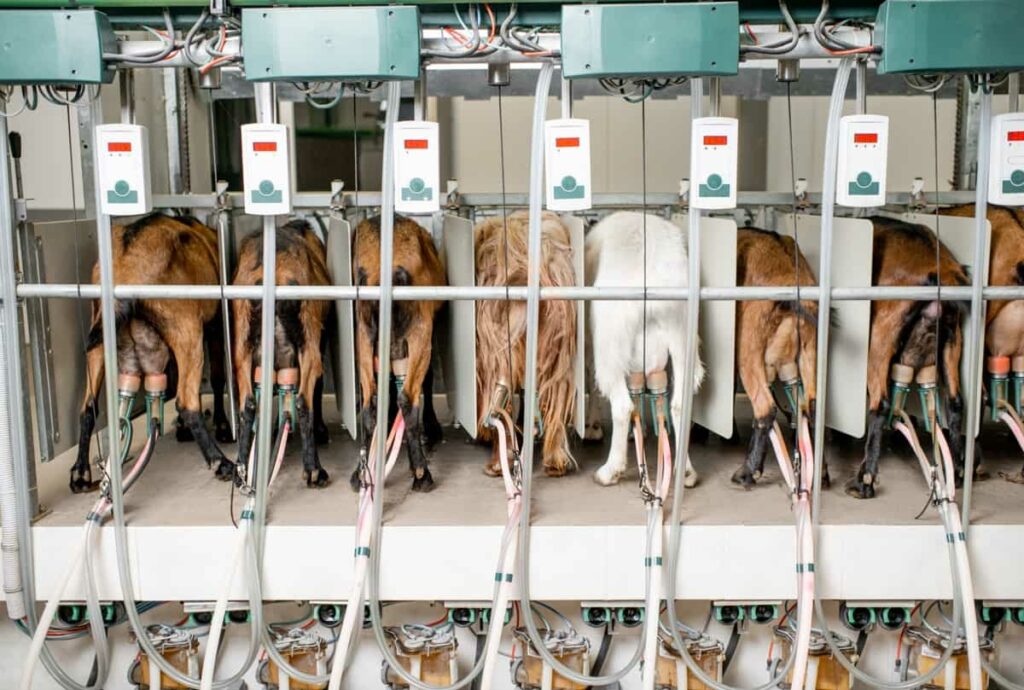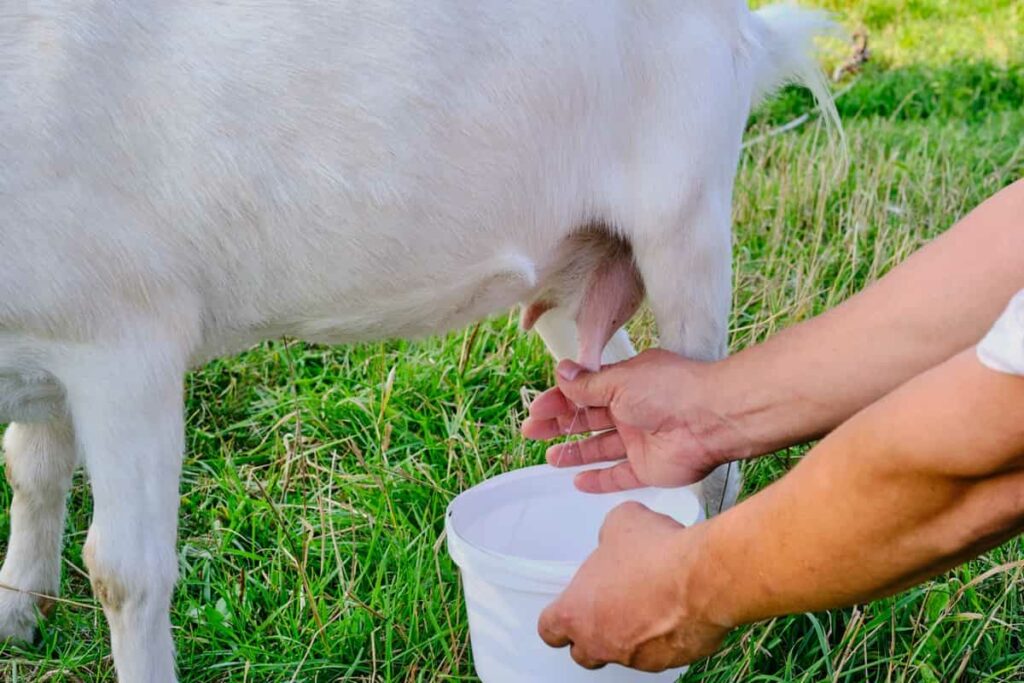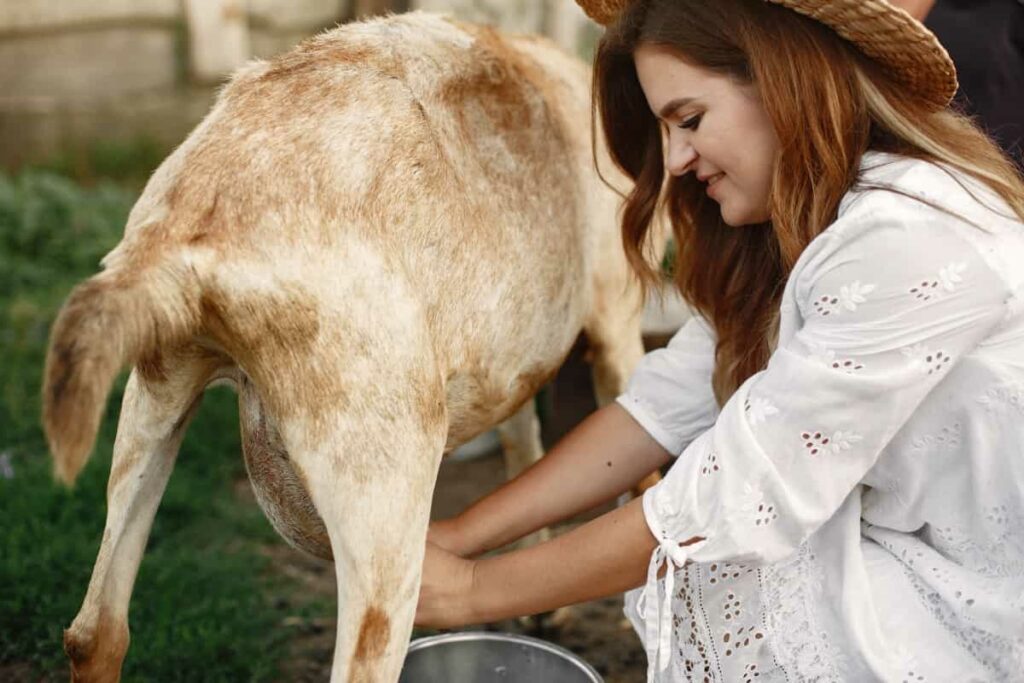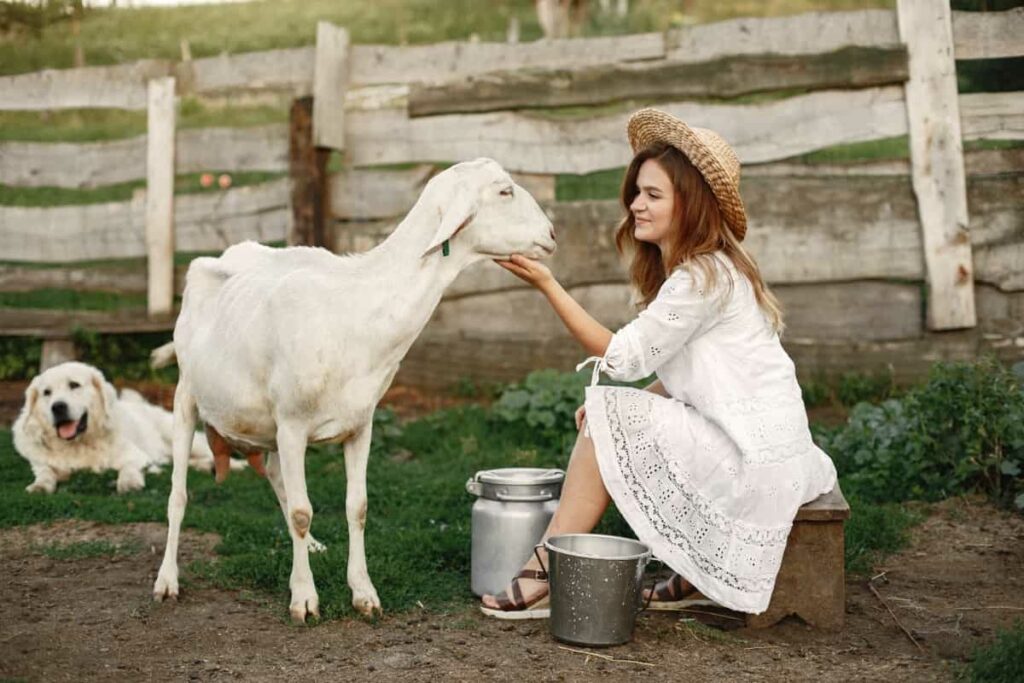Selecting the right goats for milk or meat production is of utmost importance for any farmer or homesteader. The type of goat you choose will greatly impact the success and productivity of your operation. Selecting goats specifically bred for milk or meat ensures you get animals with genetics optimized for their respective purposes. This means higher quality milk from dairy breeds and better meat yield from meat breeds.

How to Select Goats for Milk or Meat
Breed Selection: Choose the Right Breed for Your Purpose
Different goat breeds have distinct characteristics that make them better suited for specific purposes. If you’re primarily interested in milk production, breeds like Saanen, Nubian, or Alpine are popular choices. These breeds are known for their high milk yields and butterfat content. On the other hand, if your goal is to raise goats for meat, there are several meat-specific breeds to consider.
Boer goats are renowned for their fast growth rate and muscular build, making them ideal for meat production. Spanish and Kiko goats also excel in terms of meat quality and yield. It’s important to assess your needs and preferences when choosing a breed. Consider factors such as climate adaptability, size requirements, and available resources on your farm or homestead. Selecting the right goat breed will set a strong foundation for milk or meat production success.
Age and Maturity: Consider the Age and Maturity of the Goats
Age and maturity are crucial when selecting goats for milk or meat production. It is important to consider these factors to ensure optimal productivity and health. Younger goats may have more potential for growth and development. On the other hand, older goats may already be in their prime production years but could have health issues or decreased fertility. Maturity is another important factor to consider. Mature does are typically more experienced in breeding, pregnancy, and kidding.
Health and Parasite Resistance: Choose Healthy Goats with Good Parasite Resistance
A healthy goat is less susceptible to diseases and more likely to produce higher-quality milk or meat. To ensure you choose healthy goats, looking for signs of good overall health is crucial. These include bright eyes, a shiny coat, clean ears, and alertness. Avoid goats that appear lethargic or have discharge from their eyes or nose.
In case you missed it: Goat Farming in Uganda: A Complete Starting Guide for Milk and Meat Goat Business

In addition to general health indicators, pay close attention to the goat’s parasite resistance. Goats are susceptible to internal parasites such as worms, which can negatively impact their overall well-being and productivity. Remember that disease prevention in goats is key when managing parasites in goats. Providing proper nutrition, practicing rotational grazing, and regular veterinary check-ups all contribute towards ensuring good health and strong parasite resistance in your herd.
Temperament: Select Goats with a Good Temperament
You want goats that are easy to handle and have a good disposition. Goats with a good temperament are calm, friendly, and docile. They should be comfortable around humans and not easily spooked or aggressive. A goat’s temperament can also impact its productivity. Stressful situations can affect the quality of milk production in dairy goats, while aggressive behavior in meat goats can lead to injuries or damage to property. Avoid animals that display signs of aggression, such as headbutting, biting, or excessive vocalization.
Size and Weight: Consider the Goat Size and Weight
Larger goats tend to have higher meat yields, making them a better choice for those focusing primarily on meat production. On the other hand, if you’re looking for dairy goats, smaller breeds are often preferred. These goats are typically more efficient at converting feed into milk and are easier to handle during milking.
It’s important to consider not only the current size of the goat but also its potential growth. Additionally, take into account factors such as breed standards and market preferences. Certain markets may prefer smaller or larger sizes depending on consumer demand. Finding the right balance between size and weight is key when selecting goats for milk or meat production.
Milk Production: Evaluate the Milk Production of the Does
Some breeds are known for their high milk yield, while others may not produce as much. Research different goat breeds and choose one that aligns with your goals. Next, look at individual does within the breed. Each doe will have her level of productivity. Check if they come from lines with good milking genetics and inquire about their average daily milk production.
In case you missed it: Top 6 Goat Farms in India: Biggest and Best

Ask the breeder about any previous lactation records or test results available for the does you’re interested in purchasing. This will give you an idea of their past performance. Factors like nutrition, proper management practices, and overall herd health can also impact a doe’s milk production capabilities.
Meat Production: Evaluate the Meat Quality and Yield of the Bucks
Meat production is a key consideration when selecting goats for meat. While all goats can provide meat, evaluating the quality and yield of the bucks you choose is important. The first thing to look at is the breed characteristics. Different breeds have different meat qualities, such as tenderness and flavor.
Another factor to consider is weight gain potential. Bucks that have been bred specifically for meat production will typically have higher rates of weight gain compared to dairy or fiber-focused breeds. The genetic background of a buck greatly influences its potential for producing high-quality meat offspring.
Pregnancy and Kidding: Consider the Pregnancy and Kidding History of the Does
When selecting goats for milk or meat, it is important to consider the pregnancy and kidding history of the does. This information can provide valuable insights into their reproductive health and overall productivity. Understanding the pregnancy history of a doe allows you to assess her fertility and breeding success.
Additionally, considering how many kids a doe typically produces per litter is essential when choosing goats for meat or milk production. Does with a track record of producing multiple healthy offspring are more likely to contribute significantly to your herd’s growth or milk supply.
Parasite Control: Consider the Parasite Control Practices of the Breeder
When selecting goats for milk or meat production, it’s crucial to consider their parasite control practices. Goats are susceptible to parasites that can significantly impact their health and productivity. Therefore, choosing breeders who implement effective parasite control measures is essential.
One aspect to evaluate is the breeder’s approach to preventing parasites in their herd. Another consideration is whether the breeder practices rotational grazing. This method involves moving goats between different pastures regularly, which helps reduce parasite burden by breaking the lifecycle of internal parasites. It ensures that goats are not continuously exposed to contaminated areas, minimizing infection rates.
Using herbal remedies and natural alternatives for parasite control is also worth exploring when choosing a breeder. Additionally, inquire about how often fecal samples are tested for parasites within the herd. Remember that healthy goats with good resistance against parasites will generally require less medical intervention and perform better.
Veterinary Care: Consider the Veterinary Care Provided by the Breeder
Good veterinary care ensures the goats are healthy and well-maintained, reducing the risk of diseases and health issues. A reputable breeder will have a solid understanding of goat health and provide regular check-ups, vaccinations, and deworming treatments. They will also be knowledgeable about proper nutrition and feeding practices.
It’s crucial to inquire about the breeder’s relationship with their veterinarian. A good breeder should strongly partner with a trusted vet who can provide expert advice and guidance when needed. This collaboration ensures that any health concerns are addressed promptly and effectively. In addition to routine healthcare, asking about emergency care availability is essential.
In case you missed it: How to Feed Goats: A Chart/Table for Beginners

Select Goats for Milk or Meat
| Factors Affect the Right Goat Breed for Your Purpose | Specific Tips for Selecting The Goats |
| For milk production | Saanen, Nubian, or Alpine |
| For meat production | Boer, Spanish, Kiko |
| Age and maturity | Younger goats, older goats, Mature does are typically more experienced in breeding, pregnancy, and kidding. |
| Parasite resistance | Bright eyes, a shiny coat, clean ears, and alertness |
| Pregnancy and kidding history | Understand the fertility and breeding success |
| Veterinary care | Regular check-ups, vaccinations, and deworming treatments |
Conclusion
Selecting goats specifically bred for milk production ensures you’ll have a reliable source of fresh and nutritious milk. Dairy goats are known for their ability to produce high-quality milk rich in essential nutrients like protein, calcium, and vitamins. In addition to breed selection, considering the age and maturity of the goats is crucial.
- Types of Grass Growing for Goat Farm
- How to Train Goats for Milking: A Beginners Guide
- Goat Milking Practices and Equipment: A Beginner’s Guide
- Goat Farming for Fiber: Producing Mohair and Cashmere
- Maximizing Goat Milk Production: Tips for Dairy Goat Farmers
- Goat Farming as a Family Business: Strategies for Success
- Profitable Kenya Goat Breeds for Commercial Dairy and Meat Business
- Unlock the Secrets of Oberhasli Goat: Discover Raising and Management Practices
- Ultimate Guide to Myotonic Goats: Explore Profile to Raising
Enjoyed as I want you venture into goats farming
Good Informative, Month in which we should start goat farming as we r residing in Odisha humid and hot climate.